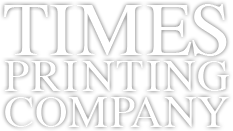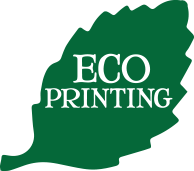
Printing Terms
Files
Bleed: Bleed is the space that goes beyond the printed area, that gets trimmed off after printing. It provides room to ensure the design reaches the edge of the paper. If you want no white borders around the edge of the paper, and you want printing to the edge of the paper, you must provide at least 1/8th of an inch (0.125") of bleed around the outside margin of your document.
Margins: The blank space surrounding the written or printed area on a page. Typical inside margins are a quarter inch away from the edge of the page.
Composition: Making changes to an existing file or creating a new file per client instructions.
Pre-flight: Using a checklist to verify that all components of a file are present and correct.
Color
CMYK: Abbreviation for cyan, magenta, yellow and black. The four colors of inks that are used in full color printing.
RGB: This color mode is not recommended for print files. RGB is a subtractive color mode using red, green, and blue light, and is the standard color mode for computer screens. Files that are submitted in RGB will be converted to CMYK.
PMS: A system used to specify spot colors. Each color has its own Pantone number by which it can be identified.
Proofing
A proof is a one-off copy of your document after any modifications and printing set up processes have been completed. The first proof is included in the cost of the project.
Printed Proof: A digitally printed sample submitted for client approval before the job prints. It may not be on the actual paper the job will print on or be color accurate.
Digital Proof: A PDF of the file is e-mailed to the client for approval before the job prints.
Proof Approval: If we proofed your order, it is on hold until we hear back from you with either approval of the proof or with requested changes.
Paper
Coating: A clear film applied to paper to make it glossy. The thicker the coating is, the glossier it makes the paper. Uncoated paper has no glossiness, matte paper has a semi-gloss coating, and glossy paper has a high-gloss coating.
Weight: The thickness of a paper stock. It is determined by the weight in pounds of a ream (500) sheets of paper cut to its parent sheet size.
Types of Printing
Digital Print: Printing presses that create the image from digital data. Digital printing allows more versatility for on-demand projects, usually allowing faster turn times.
Offset Print: An indirect printing technique whereby an inked image is transferred (offset) from a press plate to a rubber blanket, then to paper. Offset printing is the most common printing technique for high-volume projects.
Types of Bindery
Bindery is the finishing department that performs operations on the finished printed product. Operations include trimming, die cutting, punching, perforating, folding, gathering (collating), stitching, pasting, padding, gluing, inserting, etcetera.
Die Cut: A pattern of sharp knives used to stamp specific shapes out of paper.
Foil: A thin decorative metal used in foil stamping.
Perforate: The process of punching a row of small holes into a sheet of paper to allow part of it to easily be detached.
Scoring: A finishing operation that involves impressing a hard metal rule into the paper surface where a fold is to be made. This allows the paper to fold easily without any cracking.
BOOKLET BINDING Some common methods of binding for books and other multi-page documents include:
Perfect Binding: A book binding method that glues the outside edges of the pages together to create a flat edge (aka spine).
Saddle Stitch: Binding booklets using staples along the folds (spine) of the pages to bind them together.
Spiral Binding: Wires in a spiral form threaded through punched holes along the binding edge of the papers. Allows the document to lay flat when opened.
This type of binding can be on the left or top of the project, making it a good option for both booklets and calendars. An added bonus to spiral binding is the variety of different coil colors, sizes, and diameters available to accommodate your project. Spiral coils can bind pages up to 2.75 inches thick.
Wire-O Binding: Uses a metal coil and is more sophisticated in appearance. It accommodates pages and inserts of varying thickness including dividers or index tabs made from heavier cardstock.
Mailing
NCOA Update: Your address list is run through US Post Office software. Any addresses that have been updated with the Post Office in the last 9 months will be updated on your list to the current address.
Automation: The way to get the lowest postage rates available from the US Post Office. Automated mail has been barcoded, pre-sorted, and is machinable.
Letter: A mailing piece that doesn't have any dimensions big enough to quality it as a flat. See below.
Flat: A mailing piece that is more than 11.5” long, or more than 6.125” high, or more than .25” thick.
Source:
Glossary of Graphic Communications Fourth Edition, from the Printing Industries of America Press.



